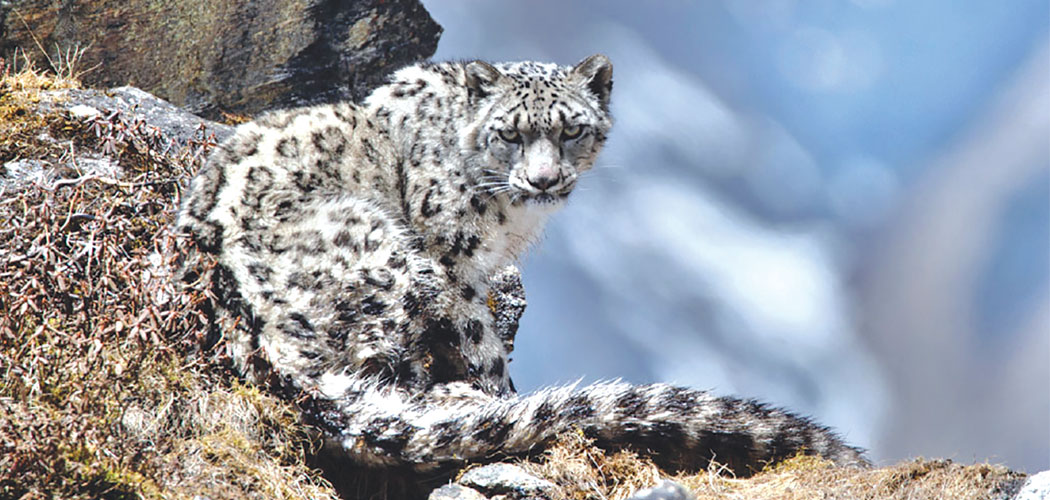
SATV 22 April, Kathmandu: The country has revealed its first-ever national estimate of the snow leopard population, counting 397 individuals across seven study regions with a mean density of 1.56 per 100 square kilometres.
The announcement marks a major innovation in conservation efforts for the elusive Himalayan big cat and positions in the country among a handful of countries to have conducted such a comprehensive assessment under the Global Snow Leopard and Ecosystem Protection Programme (GSLEP)'s guidelines, said a press statement issued by WWF on Sunday.
The coordination, data collation and analysis for this assessment was conducted under the leadership of the Department of National Parks and Wildlife Conservation (DNPWC) and the Department of Forests and Soil Conservation (DoFSC).
“This scientific achievement underscores the country’s commitment to safeguarding snow leopards and their fragile mountain ecosystems,” said Dr. Ram Chandra Kandel, Director General of DNPWC, speaking on the significance of this achievement.
“This national estimate is a historic step in Nepal’s conservation journey. It not only provides us with a clearer picture of snow leopard populations but also informs future conservation strategies. Our commitment to protecting this species remains unwavering, and we will continue working closely with local communities and global partners to ensure their long-term survival,” he said.
The assessment utilised data on snow leopard distribution and population density collected between 2015 and 2024, from individual studies led by the government, conservation institutions and researchers, using cutting-edge technology including camera traps and genetic analysis of scat samples.
The assessment was conducted following Global Snow Leopard and Ecosystem Protection Programme (GSLEP)'s Population Assessment of the World’s Snow Leopards (PAWS) by the technical team under the leadership of Senior Ecologist, DNPWC, whose members comprised of individual researchers and conservation organisations including WWF.
“A significant portion of Nepal’s snow leopard habitat falls outside designated protected areas, underscoring the need for targeted conservation measures in these landscapes. Strengthening community-based initiatives, habitat connectivity, and human-wildlife conflict mitigation strategies will be crucial for ensuring the long-term survival of snow leopards across their range,” said Badri Raj Dhungana, Director General of DoFSC.
Dr. Ghana Shyam Gurung, Country Representative of WWF Nepal, stressed the importance of this milestone, saying, “The WWF Network is proud to have supported this pioneering effort to establish a national population baseline for snow leopards.”
According to Gurung, the result will serve as a foundation for participatory conservation, ensuring that we prioritize areas where interventions are most needed.
Collaboration among government agencies, conservation organisations, and local communities is key to our success thus far and for the future of this species in the face of climate change and rapid infrastructure growth
The findings of the assessment highlight key conservation priorities, including the need for enhanced protection measures in the snow leopard landscapes to ensure long-term population viability. Similarly, the findings recognise that sustainable conservation strategies must integrate community participation and conflict mitigation measures.
The results also emphasize the importance of managing snow leopard habitats beyond protected areas (PAs). Snow leopards -- found in 12 range countries across Asia -- are among the least studied of the big cats. In 2021, a WWF publication showcased that just about 23 per cent of snow leopard’s global range has been systematically studied, and less than 3 per cent have empirical data on abundance.
In the recent past, Mongolia, Bhutan and India have used PAWS guidelines to establish national snow leopard populations. These assessments, including now of Nepal, add to growing information on the species, which will aid to improve understanding and conservation of this majestic species and their high mountain ecosystems, the statement said.












